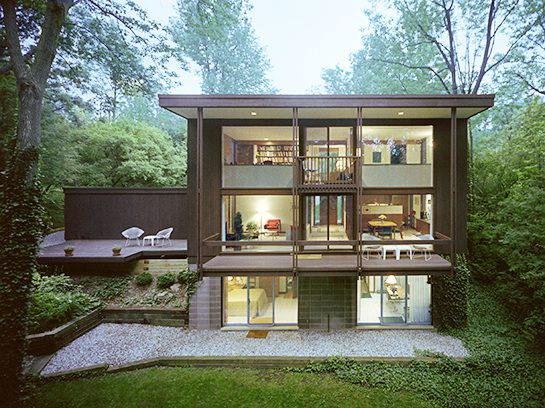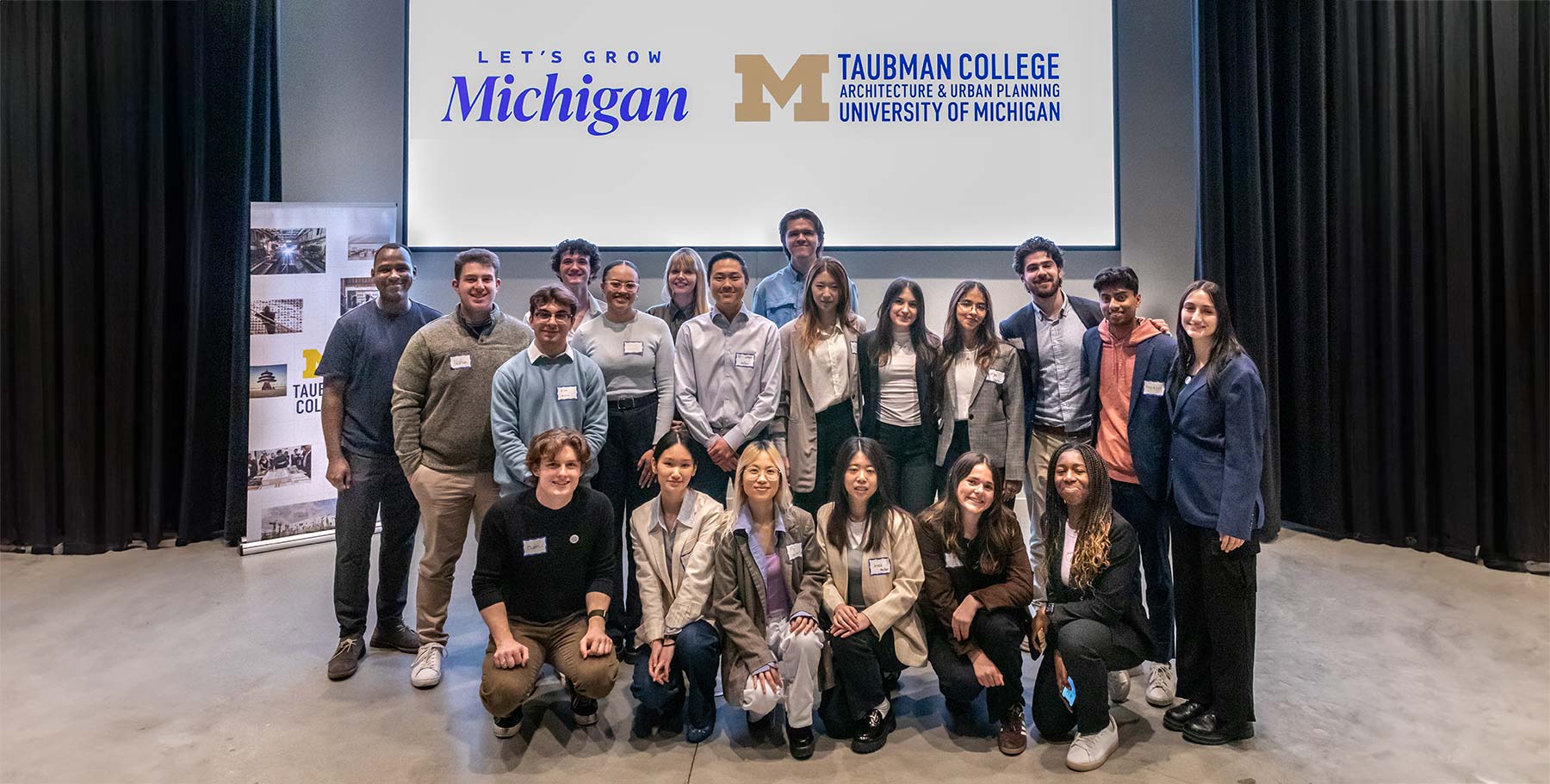Robert Metcalf’s architecture practice has realized some of the most important and recognizable modern buildings in Michigan. He began his education at the University of Michigan in 1942, though his studies were halted during World War II. After serving in Europe, Metcalf returned to Ann Arbor and finished his degree in 1950. He worked as an apprentice to George B. Brigham and began teaching architecture at the University of Michigan. He served as dean of the architecture school from 1974 to 1986, and taught at the university until he retired in 1991. Metcalf began his own practice in 1953, and over the next six decades completed more than 120 projects in Ann Arbor and the Detroit metropolitan area.

Robert C. Metcalf, Architect, Gilbert Residence, Ann Arbor, MI, 1966, Courtesy of the U-M Bentley Historical Library.
This exhibition, running April 5–July 13, 2014 at UMMA, presents fifteen modern houses designed by Metcalf that span his career from 1953 to 2008, highlighting many of his iconic houses. Each project selected exemplifies Metcalf’s modern aesthetic: straightforward design that resulted in functional, minimalist spaces for living. The exhibition is co-curator by Joseph Rosa, UMMA Director, and Nancy Bartlett, U-M Bentley Historical Library, Head of the University Archives Program.
About the Exhibition
Three Michigan Architects: Part 2–Metcalf is the second in a series of three consecutive exhibitions, with subsequent presentation of domestic work by George Brigham (July 19–October 12, 2014). Part 1 of the series presented the work of David Osler (December 21, 2013–March 30, 2013). The series will culminate in Fall 2014 with a symposium, as well as the publication of Three Michigan Architects: Osler, Metcalf, and Brigham—both of which will explore the importance of this circle of Ann Arbor-based architects, situating their regional body of domestic work into the larger context of modern architecture in the U.S. that developed on the East Coast and West Coast from the 1930s–1980s.




